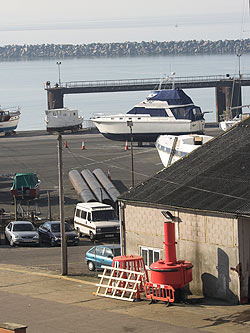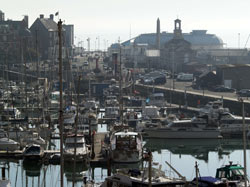Olympus Zuiko Digital ED 90-250mm f/2.8
This lens is a professional grade lens that is claimed to be splash proof and gives a 180-500mm equivalent range on the 4/3rds mount it is designed for. We take a look at how it performs.
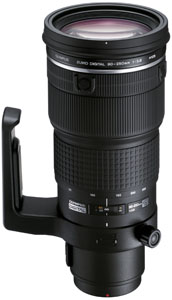 Specifications
Specifications
- Focal length 90-250mm (equivalent to 180-500mm on 35mm film)
- Aperture f/2.8
- Construction 17/12 elements/groups
- Angle of view 14-5°
- Closest focus 2.5m
- Filter size 105mm
- Lens hood LH-120B (supplied)
- Dimensions 124x276mm
- Weight 3.27kg (with supplied tripod adapter)
- Price £3999.00
Build and handling
This lens is a hefty lump for the focal range and users of conventional 70-200mm f/2.8 lenses will be surprised at the size of it. The huge 105mm front filter size gives a clue and explodes the myth that the 4/3rds system would produce smaller, more manageable lenses!
Conventionally designed, with two main rings, a stepped one for the focal length selection and a narrower, but still ample one for manual focus, the lens also sports a focus limiter on the left side with three positions. Restrictions of 8m to infinity, 2.5m to 8m and full travel from 2.5m to infinity can be set with the centre position being the full range, a sensible setup.
The are also four point memory buttons around the front collar. There is no provision for rear filters, unusual for a lens of this size and expensive for filter users.
A massive tripod bush collar is fitted and sports two tripod positions to balance with different weight bodies and the collar has a locking knob that is not too obtrusive. The collar, however, is not removable although it is very smooth in it’s rotation, as though it is on bearings. The barrel also carries a useful distance window marked in metres.
The autofocus is virtually silent although, on the E500 that the lens was tested on, the speed was a little disappointing for the class of lens and took a moment or two to make up it’s mind about focus lock. Once there though, it was accurate.
Optical quality
The colour reproduction, contrast and the control; of chromatic aberrations on this lens are all excellent, as is the control of distortions which were measured at 0.41% at the long end of the range and 0.03% at the shorter end, both of which are undetectable by eye. As with virtually all lenses of this type, the resolution was better at the short end and, disappointingly for the price of the lens, the difference was quite marked. The same is true at the longer focal length and at wider apertures at the short end, of the differences between the centre of the optic and the edge performance. Considering it’s large sized elements and the relatively small image circle that it needs to project, we expected a better overall performance. This is not to say that the lens doesn’t produce clean images, it does. But with the smaller sensor that it has to cover, pure resolution does start to become important.
Flare and ghosting during the test did not rear their ugly head, helped no doubt by the good contrast results that modern coatings manage to produce more and more often.
| 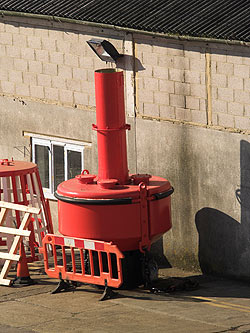 Left and above: taken from the same position, these two images show the range of this lens and its ability to pick out detail. Olympus E-500.. |
 Shot at f/8 and 250mm, the smaller sensor of the E-500 gives a greater depth-of-field than you would expect from a shot of this nature. |
Click on each comparision photo below to view full size versions
90-250mm set at 50mm and f/2.8 | 90-250mm set at 250mm and f/2.8 |
Below is our lens test data. To find out how to use these graphs look at this article: How we test lenses
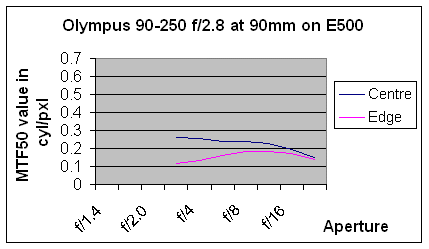
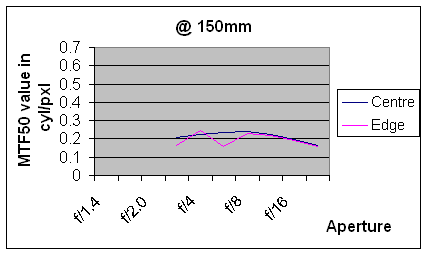
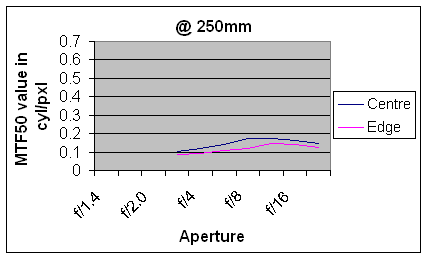
Verdict
A good lens that lacks any outstanding features. As big and heavy as a 300mm prime with the same aperture on a conventional mount, but lacking that zing, it does not draw me closer to the 4/3rds mount in any way. It also carries a bigger price tag. The hesitant AF would concern me in situations where a lens of this nature might get used, such as sports events where the action is fast.
In summary, the positive points of the Olympus Zuiko ED 90-250mm f/2.8 are:
![]() Well built and splash-proof
Well built and splash-proof
![]() Good contrast and colour rendition
Good contrast and colour rendition
![]() Substantial tripod bush
Substantial tripod bush
The negative points are:
![]() Expensive
Expensive
![]() Autofocus slow and unsure for class of lens, although accurate.
Autofocus slow and unsure for class of lens, although accurate.
![]() Absolute resolution questionable, especially at the longer length.
Absolute resolution questionable, especially at the longer length.
Check the latest price for the Olympus Zuiko ED 90-250mm f/2.8 here
Test by Ian Andrews www.wildaboutkent.com
Add your message
Please login here or if you've not registered, you can register here. Registering is safe, quick and free.
photodo Stats
428 MTF tests
74 in-depth photodo reviews
100+ users join each day
Help the lens community by reviewing or rating a lens today via our lens search
Latest Lens Reviews
- Chinon 28mm f/2.8 Vintage Lens Review
- Canon EF 70-200mm f/4L IS II USM Lens Review
- Samyang AF 85mm f/1.4 EF Review
- Sigma 70mm f/2.8 DG Macro Art Review
- Samyang AF 24mm f/2.8 FE Review
- Meike 50mm f/1.7 Review
- Tamron 70-210mm f/4 Di VC USD Review
- Lensbaby Burnside 35mm f/2.8 Review
- Asahi Super Takumar 50mm f/1.4 Review
- Asahi Super-Multi-Coated Takumar 135mm f/3.5 Review
